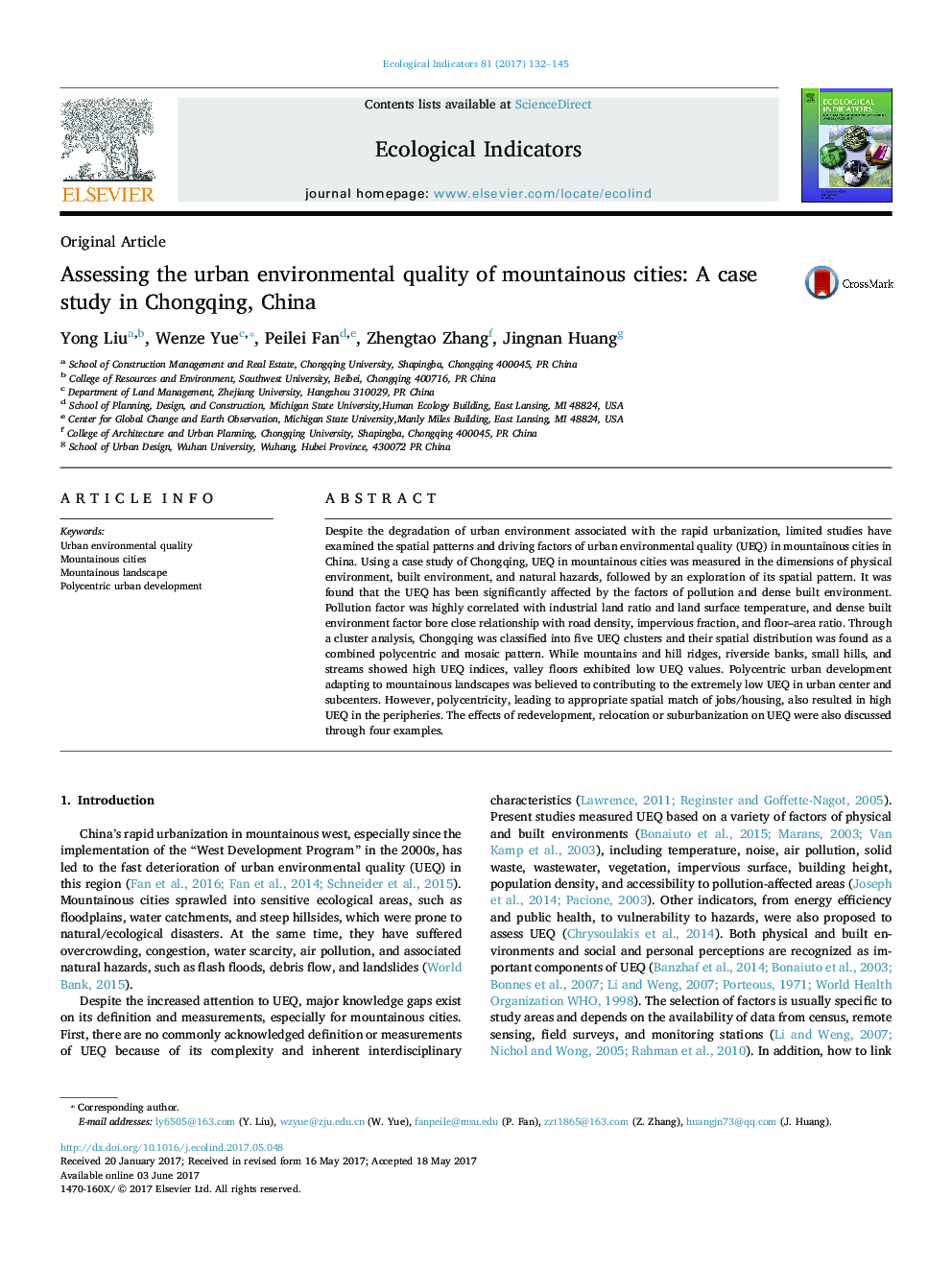| کد مقاله | کد نشریه | سال انتشار | مقاله انگلیسی | نسخه تمام متن |
|---|---|---|---|---|
| 5741418 | 1617121 | 2017 | 14 صفحه PDF | دانلود رایگان |
- The unique challenges of urban environmental quality (UEQ) of mountainous cities were assessed.
- Factors of pollution and dense built environment affecting UEQ were identified in Chongqing.
- Distribution of UEQ clusters could be described as a combined polycentric and mosaic pattern.
- Unique mountainous landscape and polycentricity had significant impact on UEQ.
Despite the degradation of urban environment associated with the rapid urbanization, limited studies have examined the spatial patterns and driving factors of urban environmental quality (UEQ) in mountainous cities in China. Using a case study of Chongqing, UEQ in mountainous cities was measured in the dimensions of physical environment, built environment, and natural hazards, followed by an exploration of its spatial pattern. It was found that the UEQ has been significantly affected by the factors of pollution and dense built environment. Pollution factor was highly correlated with industrial land ratio and land surface temperature, and dense built environment factor bore close relationship with road density, impervious fraction, and floor-area ratio. Through a cluster analysis, Chongqing was classified into five UEQ clusters and their spatial distribution was found as a combined polycentric and mosaic pattern. While mountains and hill ridges, riverside banks, small hills, and streams showed high UEQ indices, valley floors exhibited low UEQ values. Polycentric urban development adapting to mountainous landscapes was believed to contributing to the extremely low UEQ in urban center and subcenters. However, polycentricity, leading to appropriate spatial match of jobs/housing, also resulted in high UEQ in the peripheries. The effects of redevelopment, relocation or suburbanization on UEQ were also discussed through four examples.
Journal: Ecological Indicators - Volume 81, October 2017, Pages 132-145
